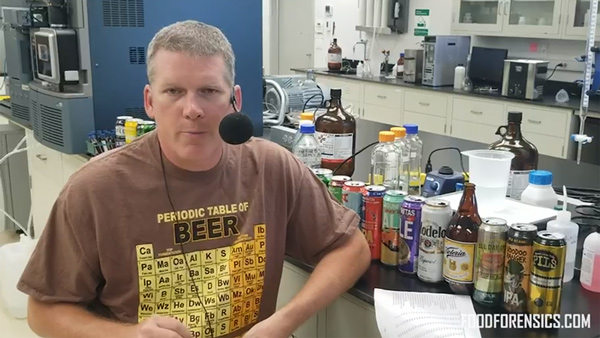Quantum particles can fly through barriers, just like ghosts
08/04/2019 / By Edsel Cook

Particles that are smaller than an atom can behave very strangely, thanks to a process called “quantum tunneling.” They can zip through barriers that keep larger objects out, and they do this instantaneously.
Researchers in Australia have spent years studying electrons as the subatomic particles move away from their parent hydrogen atom. They found that quantum tunneling of electrons took place instantly.
The tiny size of the subatomic particle isn’t responsible for its ability to pass through solid objects. Instead, the particle moves through the quantum level, which operates on different rules of physics.
Atoms are the tiniest forms of matter. They also possess the same properties as an element and behave in the same way as molecules and other larger objects. This means they cannot penetrate solid objects.
In comparison, subatomic particles like photons and electrons also happen to be waves that endlessly extend in space. The wave equation states that a particle may appear in any location on its wave.
A wave that hits a barrier will lose energy. That causes its amplitude — the highest point of a wave — to drop noticeably.
But if the barrier is sufficiently thin, the wave will not get utterly flat. And if the particle retains enough energy, it might penetrate the barrier via quantum tunneling. (Related: Quantum computer time machine: Russian physicists can move small particles a fraction of a second into the past.)
How long does quantum tunneling last?
An Australian research team at Griffith University spent three years trying to record quantum tunneling in action. They described their long experiment to be very challenging.
“You need to combine very complicated laser systems, a reaction microscope and a hydrogen atomic beam system to work all at the same time,” explained Griffith researcher Robert Sang, one of the authors of the study.
Sang’s team started by predicting the moment that the electron from the atom was going to penetrate a barrier. They kept a keen eye on the setup during three important reference points.
The first reference point was their initial interaction with an atom to free an electron. The next point covered the period that they predicted the quantum tunneling.
Finally, they tried to record the actual moment that the subatomic particle penetrated the barrier and quantum tunneled out of the other side.
They freed electrons from atoms using a device called an attoclock. The optical clock uses incredibly brief pulses of polarized light to measure the movements of electrons to a billionth of a billionth of a second (attosecond).
The attoclock showed hydrogen atoms with a thousand pulses each second. The freed electrons fled their parent atoms and hit a barrier.
On the other side of the barrier, a reaction microscope kept a lookout for any electron that made it through. The instrument measured the energy remaining in the charged particle.
The simplest atom offers the most accurate measurement of quantum tunneling
The Griffith researchers compared the energy imparted by the attoclock on the freed electron with the remaining momentum after going through the barrier. They used the results to calculate the duration of quantum tunneling.
“The precision that we could measure this to was 1.8 attoseconds,” Sang reported. “We were able to conclude that the tunneling must be less than 1.8 attoseconds.”
Earlier experiments used atoms that contained two or more electrons. They recorded much longer periods of quantum tunneling.
In comparison, the Griffith study looked at atomic hydrogen, the simplest atom with only one electron orbiting its nucleus. Sang went with atomic hydrogen to decrease the number of freed electrons and the risk of interaction between the particles. By choosing an atom with the simplest atomic structure, his team achieved the greatest accuracy.
Sources include:
Tagged Under: atoms, attoclock, attosecond, electrons, free electrons, hydrogen, molecules, photons, physics, quantum particles, quantum physics, quantum tunneling, subatomic particles, wave equation, weird science
RECENT NEWS & ARTICLES
COPYRIGHT © 2017 REAL SCIENCE NEWS



















